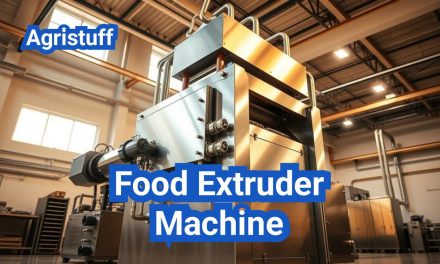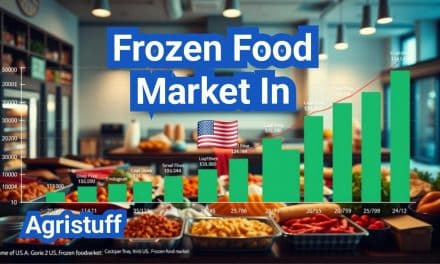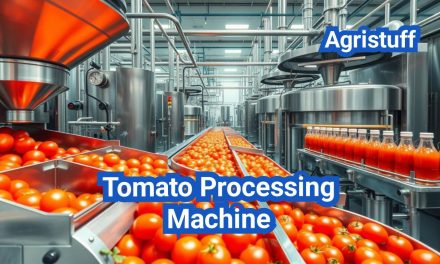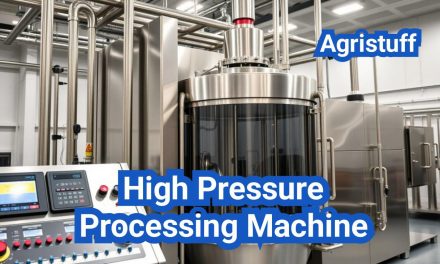The demand for temperature-sensitive products has surged, presenting both opportunities and challenges for the logistics industry. Maintaining the quality and safety of these products throughout the supply chain is crucial, a process known as cold chain management.
The intricate process involves refrigerated transport and frozen warehouse operations to preserve the efficacy of the products. Any disruption in this delicate process can lead to product deterioration and potential health risks.
In this article, we will explore the challenges in frozen food supply chain and discuss how innovative solutions are transforming the industry.
Key Takeaways
- Cold chain management is critical for preserving the quality and safety of temperature-sensitive products.
- The frozen food supply chain involves complex logistics, including refrigerated transport and frozen warehouse operations.
- Innovative solutions are being adopted to address the challenges in cold chain logistics.
- Compliance with regulations like FSMA is essential for maintaining the integrity of the cold chain.
- The costs associated with cold chain management can be significant, but are necessary for ensuring product safety.
The Fundamentals of Frozen Food Logistics
Frozen food logistics involves a complex series of processes designed to keep products at the correct temperature throughout their journey. This intricate process is crucial for maintaining the quality and safety of frozen foods.
Key Components of the Cold Chain
The cold chain for frozen food logistics comprises three main components: transportation and storage equipment, skilled personnel, and effective management practices. Reefer trailers and refrigerated warehouses are critical for maintaining the required low temperatures. Skilled personnel are necessary for handling equipment and managing the logistics process, while effective management practices ensure that all elements of the cold chain work together seamlessly.
Effective management practices include implementing temperature monitoring data loggers to track the temperature of products during transport and storage. This ensures compliance with food safety regulations and helps in identifying any potential issues in the cold chain.
Temperature Requirements for Different Frozen Food Categories
Frozen foods must be kept at or below -18°C (0°F) throughout the entire supply chain, from manufacturer to end consumer. Different categories of frozen foods may have specific temperature requirements. For instance, frozen meats and seafood require strict temperature control to prevent degradation and maintain food safety.
Understanding these temperature requirements is essential for frozen food logistics companies in the USA to ensure that products are stored and transported under optimal conditions.
The Economic Impact of Cold Chain Failures
Failures in the cold chain can have significant economic impacts, including product spoilage, loss of customer trust, and regulatory penalties. The cost of maintaining a reliable cold chain is substantial, involving investments in cold storage energy efficiency and reefer trailer best practices.
By understanding the fundamentals of frozen food logistics and implementing robust cold chain management practices, companies can mitigate these risks and ensure the integrity of their products.
How to Navigate U.S. Regulatory Requirements

Navigating the complex landscape of U.S. regulations is crucial for companies involved in frozen food logistics. The regulatory environment is multifaceted, involving various standards and protocols to ensure food safety and quality.
Implementing FSMA Sanitary Transportation Protocols
The Food Safety Modernization Act (FSMA) has introduced significant changes to how frozen foods are transported. The Sanitary Transportation Rule under FSMA requires carriers to maintain temperature logs and adhere to sanitary transport standards. This involves:
- Maintaining equipment in a sanitary condition
- Ensuring proper temperature control during transport
- Keeping detailed records of transportation operations
Temperature control is particularly critical for frozen foods. Carriers must be equipped with reliable refrigeration units and monitoring systems to prevent temperature excursions.
Establishing Food Traceability List (FTL) Compliance Systems
The FDA’s Food Traceability List (FTL) requires certain food products, including frozen foods, to be traceable throughout the supply chain. This involves implementing systems to track products from production to distribution.
| Traceability Requirements | Description |
|---|---|
| Product Identification | Unique identifiers for products to facilitate tracking |
| Data Recording | Maintaining records of product movement and storage conditions |
| Information Sharing | Sharing traceability data with supply chain partners |
Establishing a robust traceability system not only ensures compliance with FDA regulations but also enhances overall supply chain visibility.
Adapting to HFC Phasedown Under the AIM Act
The American Innovation and Manufacturing (AIM) Act mandates a phasedown of hydrofluorocarbons (HFCs), which are commonly used as refrigerants in the frozen food industry. Companies must adapt to this change by transitioning to alternative refrigerants.
Alternative refrigerants such as carbon dioxide (CO2) and hydrocarbons are gaining popularity due to their lower global warming potential. However, their adoption requires careful consideration of equipment compatibility and safety standards.
By understanding and complying with these regulatory requirements, frozen food logistics companies can ensure the integrity of their products and maintain a competitive edge in the market.
Selecting the Right Equipment for Frozen Food Transport
The success of frozen food logistics hinges on selecting the right equipment for transport. Maintaining a continuous cold chain is crucial for preserving the quality and safety of frozen products. The choice of equipment plays a vital role in achieving this goal.
Evaluating Reefer Trailer Technologies
Reefer trailers are a critical component of frozen food transport. When evaluating reefer trailer technologies, consider factors such as insulation quality, refrigeration unit efficiency, and temperature control precision. Modern reefer trailers often come equipped with advanced features like real-time monitoring systems and automated temperature adjustments.
Some key best practices for reefer trailer management include:
- Regular maintenance of refrigeration units to prevent breakdowns
- Pre-cooling trailers before loading to ensure the correct temperature
- Using data loggers to monitor temperature throughout the journey
Choosing Appropriate Temperature Monitoring Data Loggers
Temperature monitoring data loggers are essential for tracking the temperature of frozen foods during transport. When selecting data loggers, consider their accuracy, battery life, and data retrieval methods. Some data loggers can provide real-time data, while others store information for later retrieval.
Key features to look for in temperature monitoring data loggers include:
- High accuracy temperature sensors
- Long battery life to cover the duration of the transport
- Robust construction to withstand the rigors of transport
Selecting Proper Transport Containers
The choice of transport containers is vital for maintaining the integrity of frozen foods. Frozen food transport boxes and bags must be designed to withstand low temperatures and prevent moisture from entering. Insulated containers with cooling agents can also be used for shorter journeys.
When selecting transport containers, consider the following:
- Insulation properties to maintain low temperatures
- Durability and resistance to damage
- Compatibility with the specific frozen food products being transported
By carefully evaluating reefer trailer technologies, choosing appropriate temperature monitoring data loggers, and selecting proper transport containers, businesses can ensure the safe and efficient transport of frozen foods.
Setting Up Efficient Frozen Warehouse Operations

Efficient frozen warehouse operations are the backbone of a reliable cold chain, ensuring the quality and safety of frozen foods. A well-managed warehouse is crucial for maintaining the integrity of temperature-sensitive products throughout the supply chain.
Designing Optimal Warehouse Layouts for Frozen Products
Designing an optimal warehouse layout is critical for efficient frozen food storage. The layout should facilitate easy access to products, minimize handling times, and ensure that products are stored at the correct temperatures. Utilizing vertical space effectively can also help in maximizing storage capacity without compromising on accessibility or temperature control.
An efficient layout also involves segregating different product categories and implementing a first-in, first-out (FIFO) inventory system to prevent older stock from being left behind. This requires careful planning and potentially the use of advanced warehouse management systems (WMS) to track inventory levels and locations.
Implementing Inventory Management Systems
Implementing an effective inventory management system is vital for optimizing warehouse operations. Such systems help in tracking inventory levels, monitoring product locations, and automating tasks such as order fulfillment and stock replenishment. Advanced systems can also provide real-time data on inventory levels, enabling more accurate forecasting and decision-making.
An inventory management system that integrates with other supply chain components can further enhance operational efficiency. For instance, it can help in identifying bottlenecks, reducing stockouts, and improving overall supply chain visibility.
Reducing Energy Consumption in Cold Storage Facilities
Reducing energy consumption is a key aspect of efficient frozen warehouse operations. Cold storage facilities are among the largest consumers of energy in the frozen food supply chain. Implementing energy-efficient practices and technologies can significantly reduce operational costs and environmental impact.
Strategies for reducing energy consumption include upgrading to energy-efficient lighting and refrigeration systems, improving insulation, and optimizing operational practices such as loading and unloading procedures. Regular maintenance of equipment is also crucial for ensuring that systems operate at peak efficiency.
Establishing Temperature Control and Monitoring Protocols
Establishing robust temperature control and monitoring protocols is vital for ensuring the quality and safety of frozen foods. These protocols are critical in maintaining the integrity of the cold chain, from production to consumption.
Conducting ISTA7E Thermal Validation Tests
ISTA7E thermal validation tests are essential for verifying that packaging and shipping procedures maintain the required temperature range for frozen foods. These tests help identify potential weaknesses in the cold chain, allowing for corrective actions to be taken.
The process involves simulating various shipping scenarios to ensure that the product remains within the specified temperature range. This is crucial for maintaining compliance with regulatory requirements and ensuring product safety.
Deploying Continuous Monitoring Systems
Continuous monitoring systems provide real-time data on the temperature and condition of frozen foods during transportation and storage. These systems enable proactive measures to be taken in case of temperature excursions, reducing the risk of product spoilage.
By leveraging advanced technologies such as IoT sensors, companies can maintain precise control over their cold chain, ensuring that products are stored and transported under optimal conditions.
Creating Response Plans for Temperature Excursions
Despite the best efforts, temperature excursions can occur. Having a response plan in place is crucial for mitigating the impact of such events. This plan should include procedures for assessing the affected product, notifying stakeholders, and taking corrective actions.
A well-structured response plan helps minimize losses and ensures compliance with regulatory requirements, thereby protecting the company’s reputation and customer trust.
| Protocol | Description | Benefits |
|---|---|---|
| ISTA7E Thermal Validation Tests | Verifies packaging and shipping procedures maintain required temperature range | Ensures compliance, identifies potential weaknesses |
| Continuous Monitoring Systems | Provides real-time temperature and condition data | Enables proactive measures, reduces spoilage risk |
| Response Plans for Temperature Excursions | Outlines procedures for assessing and mitigating temperature excursions | Minimizes losses, ensures compliance |
How to Partner with Frozen Food Logistics Companies in the USA

In the complex world of frozen food logistics, selecting the right partner can make all the difference in maintaining product quality and compliance with regulations. Frozen food logistics companies play a critical role in the supply chain, ensuring that products are stored and transported at the correct temperatures.
Evaluating 3PL Providers for Frozen Food Distribution
Third-party logistics (3PL) providers specializing in frozen food distribution offer comprehensive services that include storage, transportation, and inventory management. When evaluating 3PL providers, it’s essential to consider their experience in handling frozen foods, their cold storage capabilities, and their transportation network.
Key considerations include:
- Compliance with food safety regulations
- Advanced temperature monitoring systems
- Flexibility in handling varying shipment sizes
As noted by industry experts, “A reliable 3PL provider can significantly reduce the logistical challenges faced by frozen food manufacturers, allowing them to focus on their core business.”
Selecting Specialized Frozen Food Distributors
Frozen food distributors specialize in the handling and delivery of temperature-sensitive products. Selecting a distributor that has a proven track record in frozen food logistics is crucial. Factors to consider include their distribution network, delivery schedules, and handling practices.
Best practices for selecting distributors:
- Assess their cold chain infrastructure
- Evaluate their quality control measures
- Review their customer service and support
Working with Freight Forwarders for International Frozen Shipments
For businesses looking to export or import frozen foods, working with experienced freight forwarders is vital. They can navigate the complexities of international shipping, including customs clearance and compliance with international regulations.
When selecting a freight forwarder, consider:
- Their experience with perishable goods
- Their knowledge of international regulations
- Their ability to provide real-time tracking and monitoring
By carefully evaluating and selecting the right logistics partners, businesses can ensure the integrity of their frozen food products throughout the supply chain.
Optimizing Transportation Strategies for Frozen Products

To maintain the quality and safety of frozen foods, it’s essential to develop and implement optimized transportation strategies. Effective logistics planning is critical in ensuring that frozen products reach their destinations in a timely manner while maintaining the required temperature controls.
The transportation of frozen foods involves several key components, including route optimization, multi-modal transport solutions, and efficient last-mile delivery. Each of these elements plays a crucial role in maintaining the integrity of the cold chain.
Developing Route Optimization for Temperature-Sensitive Goods
Route optimization is vital for reducing transit times and ensuring that frozen foods remain at the correct temperature throughout their journey. By analyzing traffic patterns, road conditions, and weather forecasts, logistics providers can identify the most efficient routes for transporting temperature-sensitive goods.
Utilizing advanced logistics software and GPS tracking, companies can monitor their fleets in real-time, making adjustments as needed to avoid delays. This proactive approach not only enhances the reliability of the cold chain but also reduces the risk of temperature excursions.
Coordinating Multi-Modal Transport Solutions
Multi-modal transport involves the use of different transportation modes, such as trucks, trains, and ships, to move frozen goods from origin to destination. Coordinating these various modes requires careful planning to ensure seamless transitions and maintain consistent temperature control.
By leveraging the strengths of each transportation mode, companies can create efficient and cost-effective logistics solutions. For instance, using rail for long-haul transport and trucks for last-mile delivery can optimize both cost and transit time.
Solving Last-Mile Delivery Challenges for Frozen Foods
Last-mile delivery is often the most challenging aspect of frozen food logistics, as it involves navigating urban areas and dealing with variable traffic conditions. To overcome these challenges, companies are turning to innovative solutions such as crowd-sourced delivery and the use of refrigerated lockers.
Implementing temperature monitoring systems during last-mile delivery ensures that frozen foods remain within the required temperature range. Additionally, using insulated packaging and refrigerated vehicles can further enhance the integrity of the cold chain during this critical phase.
By focusing on route optimization, multi-modal transport, and last-mile delivery, companies can significantly improve their frozen food transportation strategies, ensuring the safe and timely delivery of these products to consumers.
Managing Costs in the Frozen Food Supply Chain

Effective cost management is crucial for maintaining profitability in the frozen food supply chain. Companies must navigate a complex web of expenses, from transportation costs to warehousing expenses, while also investing in sustainability initiatives.
Analyzing Transportation Cost Factors
Transportation costs are a significant component of the overall expense in the frozen food supply chain. Factors influencing these costs include:
- Fuel prices and their impact on transportation costs
- The type of transportation used (e.g., refrigerated trucks, air freight)
- Route optimization to reduce mileage and lower emissions
- Compliance with regulations, such as hours of service for drivers
By analyzing these factors, companies can identify opportunities to reduce transportation costs without compromising the integrity of their frozen products.
Controlling Warehousing and Storage Expenses
Warehousing and storage expenses are another critical area where costs can be managed effectively. Strategies for control include:
- Optimizing warehouse layout to maximize storage capacity
- Implementing efficient inventory management systems to reduce waste and minimize storage needs
- Investing in energy-efficient equipment and technologies to lower utility bills
By adopting these strategies, frozen food companies can significantly reduce their warehousing and storage expenses.
Balancing Energy Consumption and Sustainability Investments
Balancing energy consumption with sustainability investments is a delicate task in the frozen food supply chain. Companies must consider:
- The use of renewable energy sources to power facilities
- Investing in energy-efficient technologies, such as LED lighting and advanced refrigeration systems
- Implementing sustainable practices throughout the supply chain
By striking the right balance, companies can reduce their environmental footprint while maintaining operational efficiency.
Implementing Technology Solutions for Cold Chain Management

Implementing the right technology solutions is key to successful cold chain management. As the demand for frozen foods continues to grow, companies are leveraging advanced technologies to ensure the quality and safety of their products throughout the supply chain.
Deploying IoT and Real-Time Monitoring Systems
The Internet of Things (IoT) has revolutionized cold chain management by enabling real-time monitoring of temperature-sensitive goods. IoT devices can be placed in refrigerated trucks, containers, and warehouses to track temperature, humidity, and other critical parameters. This allows for:
- Immediate alerts in case of temperature excursions, enabling swift corrective actions.
- Continuous monitoring to ensure that products remain within safe temperature ranges.
- Data collection for analysis and optimization of cold chain operations.
Utilizing Blockchain for Enhanced Food Traceability
Blockchain technology is being increasingly adopted in the food industry to enhance traceability and transparency. By creating an immutable record of transactions, blockchain can help:
- Track the origin of food products, ensuring authenticity and compliance with regulations.
- Monitor the movement of goods through the supply chain, reducing the risk of contamination.
- Facilitate recalls by quickly identifying affected products and their locations.
Leveraging Predictive Analytics for Cold Chain Optimization
Predictive analytics can significantly enhance cold chain management by forecasting potential disruptions and optimizing logistics. By analyzing historical data, weather patterns, and other factors, companies can:
- Anticipate and mitigate risks such as equipment failures or transportation delays.
- Optimize routes and schedules for refrigerated transport, reducing costs and improving efficiency.
- Improve inventory management by predicting demand and adjusting stock levels accordingly.
By embracing these technology solutions, companies can ensure a more reliable, efficient, and safe cold chain, ultimately benefiting both businesses and consumers.
Developing a Risk Management Strategy

In the complex world of frozen food logistics, developing a robust risk management strategy is essential. This involves identifying potential risks, assessing their impact, and implementing measures to mitigate them.
Mapping Critical Control Points in Your Cold Chain
Mapping critical control points is a crucial step in risk management. It involves identifying key points in the supply chain where temperature control is critical to maintaining product safety and quality.
- Receiving and Storage: Ensuring that frozen foods are stored at the correct temperature upon receipt and throughout storage.
- Transportation: Maintaining consistent refrigerated temperatures during transport to prevent thawing or temperature abuse.
- Order Fulfillment: Ensuring that orders are prepared and shipped without compromising the cold chain.
Creating Contingency Plans for Equipment Failures
Equipment failures can significantly disrupt the cold chain. Creating contingency plans involves identifying potential failure points, having backup equipment or alternative arrangements, and training staff on emergency procedures.
- Identify critical equipment and potential failure modes.
- Develop backup plans, such as having redundant systems or emergency refrigeration units.
- Train personnel on contingency procedures to minimize downtime.
Securing Appropriate Insurance for Temperature-Sensitive Cargo
Insurance is a critical component of risk management for temperature-sensitive cargo. Companies should secure insurance policies that cover potential losses due to equipment failure, natural disasters, or other disruptions.
Key considerations when selecting insurance include:
- Coverage for equipment failure and resultant product loss.
- Business interruption coverage to mitigate lost revenue.
- Coverage for natural disasters and other external factors.
Building Sustainability into Frozen Food Transport

The need to reduce environmental impacts is driving innovation in frozen food logistics. As the industry continues to grow, companies are under increasing pressure to adopt sustainable practices that minimize their ecological footprint.
Sustainable Practices in Frozen Food Transport
One of the key areas of focus is reducing the carbon footprint associated with refrigerated transport. This involves optimizing routes, improving the energy efficiency of refrigeration units, and exploring alternative fuels.
Reducing Carbon Footprint in Refrigerated Transport
To minimize carbon emissions, companies are turning to advanced technologies such as:
- Route optimization software to reduce fuel consumption
- Eco-friendly refrigerants with lower global warming potential
- Aerodynamic improvements to trailers to decrease drag
Implementing these strategies not only reduces environmental impact but can also lead to cost savings through improved fuel efficiency.
Transitioning to Alternative Refrigerants
The phasedown of hydrofluorocarbons (HFCs) under the American Innovation and Manufacturing (AIM) Act is accelerating the transition to alternative refrigerants. Companies are investing in:
- Natural refrigerants like carbon dioxide and ammonia
- New generations of synthetic refrigerants with lower GWP
This transition requires significant investment in new equipment and training but is crucial for reducing the industry’s climate impact.
Implementing Energy-Efficient Cold Storage Practices
Energy-efficient cold storage is another critical aspect of sustainable frozen food logistics. This includes:
- Upgrading to LED lighting and energy-efficient HVAC systems
- Improving insulation and reducing air leakage in cold storage facilities
- Implementing smart energy management systems to optimize energy use
By adopting these practices, companies can significantly reduce their energy consumption and lower their operational costs.
Conclusion
Building sustainability into frozen food transport is not only an environmental imperative but also a business opportunity. By embracing sustainable practices, companies can reduce their environmental footprint, comply with regulations, and improve their bottom line.
Learning from Success: Case Studies in Frozen Food Logistics

Case studies in frozen food logistics reveal valuable insights into successful distribution networks and e-commerce innovations. By examining these real-world examples, companies can identify best practices and areas for improvement in their own cold chain management.
National Frozen Food Distribution Networks
National frozen food distribution networks play a crucial role in ensuring that products reach consumers in a timely and safe manner. Companies like Americold Logistics have established extensive networks across the U.S., utilizing advanced logistics technology to manage their cold chains effectively.
These networks often involve a combination of refrigerated warehouses, transportation fleets, and sophisticated inventory management systems. For instance, a leading frozen food distributor implemented a real-time monitoring system to track temperature and humidity levels across their storage facilities, significantly reducing the risk of product spoilage.
Regional Cold Chain Success Stories
Regional cold chain success stories highlight the importance of localized logistics solutions. In areas with unique challenges, such as extreme weather conditions or remote locations, companies have developed innovative strategies to maintain the integrity of their frozen products.
For example, a regional frozen food distributor in the Pacific Northwest implemented a multi-modal transportation approach, combining road, rail, and sea freight to optimize their delivery routes and reduce costs. This strategy not only improved their bottom line but also enhanced their ability to serve customers across different regions.
E-commerce Innovations in Frozen Food Delivery
E-commerce innovations are transforming the frozen food delivery landscape. Online grocery shopping has surged in popularity, and companies are responding by developing specialized logistics solutions for frozen products.
One notable example is Amazon’s frozen food delivery service, which uses insulated packaging and temperature-controlled delivery vehicles to ensure that products remain frozen during transit. This innovation has set a new standard for the industry, pushing other companies to adopt similar strategies to remain competitive.
By examining these case studies, businesses in the frozen food logistics sector can gain valuable insights into successful strategies and innovations, ultimately enhancing their own cold chain management practices.
Creating a Resilient Frozen Food Supply Chain
Maintaining the quality and safety of frozen foods requires a resilient frozen food supply chain. By understanding the fundamentals of frozen food logistics and navigating regulatory requirements, companies can ensure a reliable cold chain.
Implementing the strategies and technologies discussed in this article enables frozen food logistics companies to build a supply chain that meets industry demands. This includes selecting the right equipment, setting up efficient warehouse operations, and establishing temperature control and monitoring protocols.
A resilient frozen food supply chain is crucial for cold chain integrity. By following best practices and leveraging technology solutions, companies can minimize risks and ensure the safe transportation of frozen products.
Ultimately, creating a resilient frozen food supply chain requires careful planning, execution, and monitoring. By prioritizing frozen food logistics and cold chain integrity, companies can maintain the quality and safety of frozen foods, meeting consumer expectations and regulatory requirements.
FAQ
What is frozen food logistics?
Frozen food logistics refers to the process of managing the supply chain for frozen foods, including storage, transportation, and distribution, while maintaining the required low temperatures to preserve product quality and safety.
Why is temperature control crucial in frozen food logistics?
Temperature control is crucial because it ensures that frozen foods remain at a consistent, safe temperature throughout the supply chain, preventing product deterioration and potential health risks.
What are the key components of the cold chain?
The key components of the cold chain include refrigerated production, storage, and distribution activities that maintain a desired low-temperature range, as well as equipment such as reefer trailers and temperature monitoring data loggers.
How do I navigate U.S. regulatory requirements for frozen food logistics?
To navigate U.S. regulatory requirements, frozen food logistics companies must implement FSMA sanitary transportation protocols, establish food traceability list compliance systems, and adapt to new regulations such as the HFC phasedown under the AIM Act.
What is the importance of ISTA7E thermal validation in frozen food logistics?
ISTA7E thermal validation is important because it ensures that packaging and transportation systems can maintain the required temperatures for frozen foods, thereby safeguarding product quality and safety.
How can I optimize transportation strategies for frozen products?
Optimizing transportation strategies involves developing route optimization for temperature-sensitive goods, coordinating multi-modal transport solutions, and solving last-mile delivery challenges for frozen foods.
What are the benefits of using 3PL providers for frozen food distribution?
The benefits of using 3PL providers include access to specialized expertise, reduced costs, and improved efficiency in managing the frozen food supply chain.
How can I reduce energy consumption in cold storage facilities?
Reducing energy consumption in cold storage facilities can be achieved by implementing energy-efficient practices, such as using advanced insulation materials, optimizing lighting, and upgrading to energy-efficient equipment.
What is the role of IoT and real-time monitoring in cold chain management?
IoT and real-time monitoring play a crucial role in cold chain management by enabling real-time tracking of temperature and other critical parameters, allowing for prompt intervention in case of any deviations.
How can I build sustainability into frozen food transport?
Building sustainability into frozen food transport involves reducing carbon footprint, transitioning to alternative refrigerants, and implementing energy-efficient cold storage practices.
What are the common challenges in frozen food logistics?
Common challenges in frozen food logistics include maintaining consistent temperatures, managing supply chain disruptions, and ensuring regulatory compliance.
How can I develop a risk management strategy for frozen food logistics?
Developing a risk management strategy involves mapping critical control points in the cold chain, creating contingency plans for equipment failures, and securing appropriate insurance for temperature-sensitive cargo.
Conclusion of: Frozen Food Logistics
Introduction: what “frozen food logistics” really means
Frozen food logistics is the end-to-end cold chain that keeps products at or below 0°F (-18°C) from plant to plate so food stays safe and quality is preserved. In practice, that means aligning processing, packaging, warehousing, transportation, and last-mile delivery around one goal: preventing temperature abuse and documenting control. From a safety standpoint, food kept continuously at 0°F remains safe—quality may decline over time, but microbial growth is effectively stopped—so every decision in frozen food logistics is built around that target. USDA FSIS – Freezing & Food Safety
The regulatory backbone of frozen food logistics (FSMA)
U.S. regulations make frozen food logistics a shared responsibility across shippers, loaders, carriers, and receivers. The FDA’s FSMA Sanitary Transportation rule requires vehicles/equipment to be cleanable and capable of adequate temperature control, plus written procedures, training, and records appropriate to the risk level. For frozen food logistics, this usually means validated setpoints, clean trailers/containers, and routine calibration of monitoring devices. FDA – FSMA Sanitary Transportation Rule
The legal “musts” for temperature control
The eCFR clarifies that transportation equipment used for frozen food logistics must be designed, maintained, and operated to provide adequate temperature control so food does not become unsafe during transport. In practice, that includes proper insulation, tight door gaskets, curtains/air-chutes, and procedures that limit door-open time. These expectations underpin contracts and SOPs across frozen food logistics networks. eCFR – 21 CFR Part 1, Subpart O
The science target: why 0°F (-18°C) anchors frozen food logistics
Because microbial growth is essentially halted at 0°F, frozen food logistics aims to keep products continuously at or below that temperature from blast freezer to retail case. Quality still matters—slow oxidation, ice recrystallization, and texture changes can occur—so time and temperature history determine sensory outcomes. This is why temperature data and first-in/first-out stock rotation remain pillars of frozen food logistics. FoodSafety.gov – Cold Storage Guidance
Loading, airflow, and pallet patterns that protect the cold chain
Airflow is as important as setpoint in frozen food logistics. Pallets should be centered off the trailer walls, returns must not be blocked, and mixed-temperature items should never be loaded together without clear segregation. Proper dunnage and head-space help air circulate uniformly, reducing hot spots that jeopardize frozen food logistics quality and safety. USDA AMS – Transporting Perishables by Truck (Handbook 669)
Pre-cooling trailers and pre-chilling product
Pre-cooling the trailer and tendering product at target temperature are non-negotiable in frozen food logistics. Reefers are designed to maintain—not to “freeze down”—warm product; attempting pull-down in transit risks surface thaw/refreeze and quality loss. Good SOPs for frozen food logistics include verifying product core temperatures before loading and logging trailer pre-cool times. USDA AMS – Loading & Temperature Practices
Monitoring, telematics, and recordkeeping
Modern frozen food logistics programs use calibrated probes, return-air sensors, and data loggers (or telematics) to document temperature control across each route. Records support investigations and preventive actions, and they demonstrate due diligence during audits. Clear contracts specifying setpoints, alarms, corrective actions, and record retention strengthen frozen food logistics compliance. FDA – Guidance on Sanitary Transportation
E-commerce & last-mile realities
Direct-to-consumer delivery expanded the scope of frozen food logistics to include insulated packaging, gel packs/dry ice, porch drop procedures, and proof of temperature control at delivery. Shorter dwell times and clear customer instructions reduce risk. Robust policies for returns and substitutions keep frozen food logistics safe as order volumes fluctuate. FDA – E-Commerce & Smarter Food Safety
Air shipments and dry ice rules
When parcels fly, frozen food logistics must meet hazmat rules. Dry-ice packages require venting and labels showing net dry-ice weight; many carriers limit per-package quantities. Teams should train on shipper-specific rules, but FAA guidance offers the baseline. Good documentation keeps frozen food logistics compliant across air hubs and couriers. FAA – PackSafe: Dry Ice
Packaging validation and ISTA thermal profiles
Insulated shippers used in frozen food logistics are often qualified against ISTA 7E (or similar) thermal profiles to simulate seasonal lanes. Packaging engineers compare coolant loads, carton configurations, and hold times, then document pass/fail criteria. This disciplined approach reduces excursions and claims in parcel-based frozen food logistics. ISTA – Thermal Standards (incl. 7E)
Traceability requirements (FSMA 204) and frozen SKUs
Many frozen SKUs aren’t on FDA’s Food Traceability List, but the culture of traceability affects frozen food logistics across the board. Aligning identifiers, key data elements, and critical tracking events makes withdrawals faster and narrows recall scope. Proactive alignment today fortifies tomorrow’s frozen food logistics resilience. FDA – FSMA 204 Food Traceability
GS1 standards that make traceability practical
GS1 identifiers (GTIN for items, GLN for locations) and EPCIS event sharing help partners move data as efficiently as pallets—critical for responsive frozen food logistics. When suppliers and 3PLs use a common language, investigations shrink from days to hours, strengthening brand trust and cutting waste in frozen food logistics. GS1 US – Food Safety & Traceability
Cold warehouses: operations and energy levers
Refrigerated DCs are among the most energy-intensive buildings, so frozen food logistics benefits from door management, smart defrost, compressor sequencing, variable-speed drives, and heat-reclaim. These measures trim kWh without risking temperature control, improving margins and sustainability for frozen food logistics operators. DOE Better Buildings – Refrigeration (Cold Storage)
Energy prices: the quiet force behind landed cost
Electricity powers compressors and blast freezers while diesel powers reefers and tractors—so energy price trends can reshape frozen food logistics budgets quickly. Monitoring state-level electricity prices informs DC location strategy, while visibility on diesel trends supports surcharge negotiations in frozen food logistics. EIA – Average Retail Electricity Prices (Table 5.6.A)
Fuel volatility and freight surcharges
Transportation often dominates frozen food logistics cost. Most contracts tie fuel escalators to the EIA On-Highway Diesel index; weekly updates justify adjustments and help forecast landed cost. Using that benchmark, shippers can model the sensitivity of frozen food logistics rates to fuel spikes. EIA – Gasoline & Diesel Fuel Update
Refrigerants, compliance, and sustainability
Refrigerant choice affects compliance and lifecycle cost in frozen food logistics. Under the AIM Act, the U.S. is phasing down HFCs, driving adoption of lower-GWP alternatives (ammonia, CO₂, HFO blends) and leak-tight designs. Smarter refrigerant management lowers emissions and OpEx for frozen food logistics networks. EPA – AIM Act: HFC Phasedown
People and safety: cold-stress management
Workers keep frozen food logistics moving. OSHA recommends layered clothing, insulated/waterproof footwear, warm-up breaks, and training to prevent cold stress and slips in icy/wet areas. Good ergonomics, lighting, and floor treatments reduce injuries and downtime across frozen food logistics sites. OSHA – Cold Stress Guide
Inventory signals and capacity snapshots
USDA Cold Storage reports provide monthly snapshots of inventories by category—useful for planning space, negotiating rates, and forecasting flow in frozen food logistics. Watching seasonality and year-over-year changes helps align procurement, promotions, and production with frozen food logistics capacity. USDA NASS – Cold Storage Program
Cost components and how to control them
Total landed cost in frozen food logistics reflects energy (DCs and reefers), labor, packaging/coolant, line-haul and drayage, detention/demurrage, accessorials (lumper, liftgate), temperature-monitoring tech, shrink, and claims. Practical actions include: verify product temperature before loading, pre-cool trailers, use validated packaging and proper airflow, minimize doors-open time, optimize trailer cube without blocking returns, document temperature, and continuously improve DC energy performance. These steps make frozen food logistics more resilient and predictable. DOE Better Buildings – Refrigeration Practices
Final thought
From line freezers to doorstep delivery, frozen food logistics is equal parts design, discipline, and data. Anchor operations on the 0°F rule, audit temperature control with reliable records, and chip away at energy and loading inefficiencies. With those fundamentals, frozen food logistics programs keep food safe, quality high, and costs in check even as networks and demand patterns evolve. USDA FSIS – Freezing & Food Safety
Sources & References
- USDA FSIS – Freezing & Food Safety
- FDA – FSMA Sanitary Transportation Rule
- eCFR – 21 CFR Part 1, Subpart O
- FDA – Guidance on Sanitary Transportation
- USDA AMS – Transporting Perishables by Truck (Handbook 669)
- FoodSafety.gov – Cold Storage Guidance
- FDA – E-Commerce & Smarter Food Safety
- FAA – PackSafe: Dry Ice
- ISTA – Thermal Standards (incl. 7E)
- FDA – FSMA 204 Food Traceability
- GS1 US – Food Safety & Traceability
- EIA – Average Retail Electricity Prices (Table 5.6.A)
- EIA – Gasoline & Diesel Fuel Update
- EPA – AIM Act: HFC Phasedown
- OSHA – Cold Stress Guide
- USDA NASS – Cold Storage Program













